Tag: training
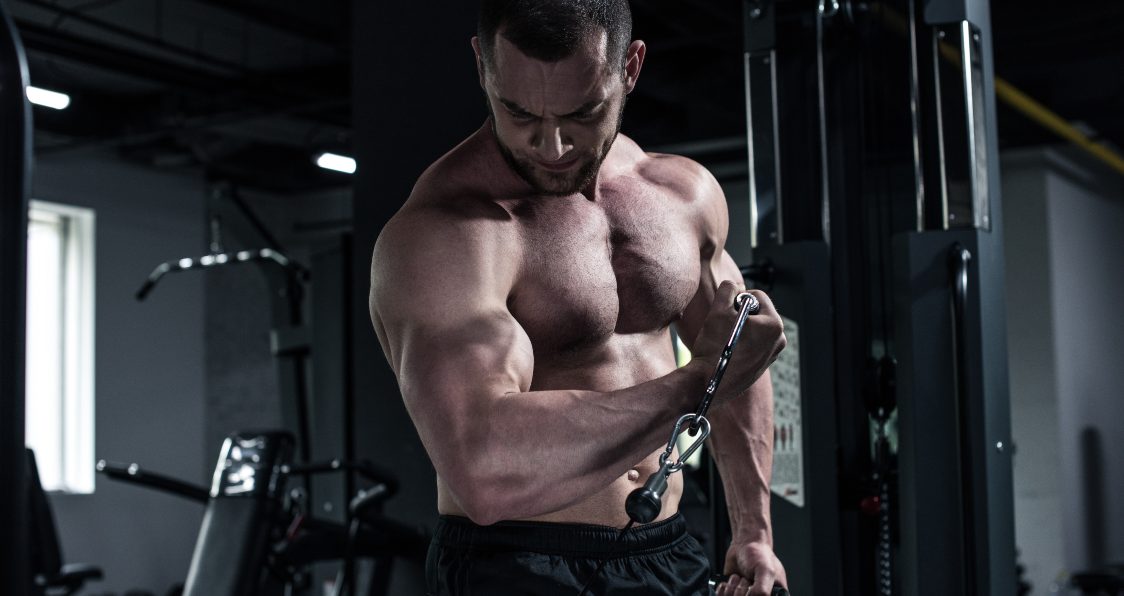
Top 10 Ways To Naturally Gain Muscle Faster For Optimal Growth
We all know the old saying “work smarter, not harder”. But do you know how that applies in the gym?
It’s true that amazing gains never come overnight, but there are still things you can be doing to maximize the amount of muscle you get out of your workouts. Of course, we know that taking certain supplements and focusing on our training can be sure fire ways to see those gains we want most, but sometimes figuring out the best steps can be challenging and ultimately may put us in an overwhelming hole as we try and figure it out. With so many options, it can be difficult to nail down the best ways to gain muscle, especially naturally, but it is possible.
While many of these ways tend to be self-explanatory and potentially obvious, our busy lives and schedules tend to keep us from fully realizing exactly what needs to be done to achieve this. Sometimes just reading it and hearing it again can be exactly what we need to make sure we hear it through and can tackle all of these muscle building needs in a safe, effective, and natural way. Working smarter is very much a true saying in the world of lifting and while working hard is important, doing so efficiently is the key to success.
Let’s take a look at the top 10 ways to naturally gain muscle faster so you never need to worry about that vital growth again. Not only will some of these ways benefit your lifting goals, but other areas of your lifestyle will change for the better as a result of taking better care of yourself.
Top 10 Ways To Naturally Gain Muscle Faster
1. Training Volume Is Key
Too many people get complacent in the gym and stop trying actively to push themselves. The fundamental key to muscle growth is progressive overload – meaning you increase the intensity of your workouts overtime (1). If you aren’t getting that burning feeling from overloading your muscles, it means you aren’t building them, period. Increase the amount of weight over time and make sure to increase the volume, too – that’s the number of sets and reps you do for each workout with weights.
2. Be Consistent
The second biggest thing to remember about making massive gains is that it’s also a game of consistency. There’s only so much muscle that can be put on by the body in a day; one huge workout, or even one huge workout once a week, will get you nowhere. Make a plan and stick to it but be in the gym three to five times a week and make sure to do that every week. Muscle is gained incrementally. Even if you aren’t pushing yourself, it’s better for your body and overall muscle mass to do so after workouts five times a week than it is to really push yourself in the gym only once or twice a week. That’s a surefire way to lose gains.
3. Take Advantage Of Supplements
Depending on your unique needs as an athlete, different supplements will work for you. Creatine, casein, and whey protein are the three cornerstone proteins of making huge gains (2). Your muscles need to consume food to grow and develop, so you need to make sure you’re giving them all the fuel they need. In some cases, eating casein before bed can actually provide the muscles with enough amino acids to literally grow overnight while you’re asleep. Imagine waking up with more gains than when you went to bed.
Other supplements to know are pre-workout, which can provide for energy and insane muscle pumps, BCAA intra-workout products to burst through fatigue and keep you going stronger, and fat burners, which can shed that unwanted fat while maintaining lean muscle mass (3). Having a good supplementation routine can really work wonders for all of your gains.
4. Be Strict About Form
This is an easy one to forget. Exercises like squats, barbell presses, and crunches are all considered staple exercises for a true gym rat. But exercises only help you gain muscle if they’re performed correctly. Are you leaning forward when you squat? It could be a sign you overloaded with too much weight. When you do a sit-up, is your spine straight and your stomach flat? If not, it’s a sign you’re overloading a weak core. Take the time to do these exercises the right way. Otherwise, you’re only getting a fraction of the gains you set out to make.
5. Get A Full Night’s Sleep
This is another no-brainer people often don’t think about. Studies have shown that sleeping for eight hours instead of five can increase testosterone by 10 to 15%. That has a huge impact on how much you gain muscle when you work out (4). This is a really easy thing you can do to improve your performance in the gym and give yourself the best chance for a better tomorrow.
6. Recovery Is An Important Part Of The Process
If you go hard in the gym five nights a week every week for a year, you will absolutely destroy your body. Set aside cycles of rest so you can recover after tough workouts. Pushing yourself too hard will only lead to burnout. Trust me, your body will thank you. Recovery will also support things like mobility and an overall better mood, so don’t neglect this vital part of your workout and post-workout routine (5).
7. Stay Healthy Outside The Gym
It doesn’t mean you can’t drink or have fun with your buddies at the bar, but you should do your best to be generally healthy in your habits outside of the gym. This means no binge drinking and stay away from drugs and smoking, at the very minimum. You definitely won’t be maximizing gains in your workouts if you’re dehydrated and hungover from a long night out partying.
8. Keep Your Workouts Simple
You don’t need fancy equipment to get shredded. Remain focused on the basics and the tried-and-true exercises that have worked for bodybuilders for generations. Don’t get caught up in the promises of fancy equipment and “new breakthroughs” that offer shortcuts. There is no shortcut; just do the work.
9. Stay Organized & Manage Workouts
Huge gains are no easy task and getting organized definitely helps make the process smoother. Consider keeping a journal of your workouts and your meal plan. You’re less likely to slip up and cheat with a greasy cheeseburger at the end of a long day if you’ve already got a plan in place and food waiting prepared at home.
10. Lift Heavy While Being Safe
If you feel comfortable lifting, you probably aren’t pushing yourself hard enough. Lifting the heaviest amount of weight you can is a critical factor in making the most gains for it will work your muscles to grow, increase that time under tension, and allow for massive gains to your strength and size which is what you want most.
Wrap Up
While it may seem daunting to find natural ways to boost your muscle growth and gain that valuable muscle faster, following these simple yet highly effective steps can work wonders for you. Looking to the top ways to see gains while still making your life easier is a sure-fire way to get this done. Give these top 10 ways a try and see how your muscles grow bigger, faster, and stronger as you also promote a better lifestyle overall.
Let us know what you think in the comments below. Also, be sure to follow Generation Iron on Facebook, Twitter, and Instagram.
*Images courtesy of Envato
References
Mangine, Gerald T.; Hoffman, Jay R.; Gonzalez, Adam M.; Townsend, Jeremy R.; et al. (2015). “The effect of training volume and intensity on improvements in muscular strength and size in resistance-trained men”. (source)
Tipton, Kevin D.; Elliott, Tabatha A.; Cree, Melanie G.; Wolf, Steven E.; et al. (2004). “Ingestion of Casein and Whey Proteins Result in Muscle Anabolism after Resistance Exercise”. (source)
Jeukendrup, A. E.; Randell, R. (2011). “Fat burners: nutrition supplements that increase fat metabolism”. (source)
Dattilo, M.; Antunes, H. K. M.; Medeiros, A.; Neto, M. M.; et al. (2011). “Sleep and muscle recovery: endocrinological and molecular basis for a new and promising hypothesis”. (source)
Sands, William A.; McNeal, Jeni R.; Murray, Steven R.; Ramsey, Michael W.; et al. (2013). “Stretching and Its Effects on Recovery”. (source)
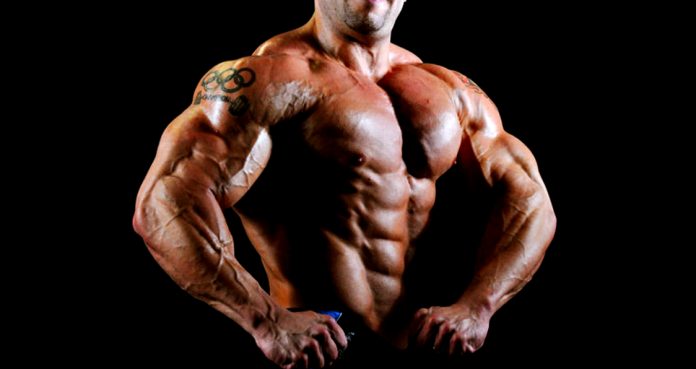
Five Crucial Tips For Aspiring Bodybuilders
Solid tips for any aspiring bodybuilder.
IFBB Pro and World record-holding powerlifter Amit Sapir has recently discovered a penchant for sharing information over the internet. This weekend he offered up five crucial tips for young and aspiring bodybuilders.
First off, he explains that more is not always better. Amit recommends that bodybuilders stay as lean as possible, even in the off season:
“Staying lean will help with insulin sensitivity, general health, and will keep you disciplined and focused on making the right food choices to help you grow.”
He also says that in this age of equipment and advanced supplementation, learning to use one’s body before specialized products is critical:
“Take the minimum amount of supplements you need to grow. Do that and you will be one step ahead of everyone else at all times, as you will always have a new card to pull from up your sleeve. Your body is the best machine you will ever have, trust it and do the work!”
Second, he says:
“Get Strong While You’re Still Young.
“I cannot put into words how much I miss the days when my body allowed me to squat almost daily, to deadlift three times a week, and to bench or overhead press every day and still get bigger and stronger.”
According to Amit, heavy compound movements form the basis for most excellent mature physiques. Of course form and prudence are important, but youth is the essential time when a lifter can push himself.
Third: Sapir says to set smaller objectives on the path to your grand goal. For him, that final end was the Olympia stage. However, like all experienced athletes, Amit knows that the real challenge is in the daily grind.
“All those workouts I did when everyone else was partying, the cardio I did in the rain for months, working with my clients and trying to smile to them while I am starving and cranky from the diet. Every single one of those was a little goal and a small win that I got daily.”
He says that setting concrete objectives for various time periods is critical to stay accountable and feel the urgency of a deadline.
“Your yearly goals should be winning small shows. After you have your yearly goals in place, break them into the daily, weekly, and monthly steps that are needed for making this goal into reality.”
Fourth, Amit says to accept the inevitability of some failure.
In his second pro show, Amit finished dead last. That failure crushed him, but it made him work smarter and harder for his next show, from which he qualified for the Olympia.
“As long as you are ok with it, then your dream will stay alive. Failure does not mean the end. Quitting does.”
Finally, Amit says to Keep Your Day Job:
“Hope for the best but prepare for the worst.
“I’ve seen people risking and losing every dollar they have and ending up in the hospital with no money to pay for the doctor bill. Dream big, but be smart, and take into consideration the worst case scenario.”
And lastly, Amit says that ultimately, life is bigger than bodybuilding:
“Spend time with loved ones…Trust me, in the end, they are more important than any pro card or a victory.”
For more news and updates, follow Generation Iron on Facebook, Twitter, and Instagram.
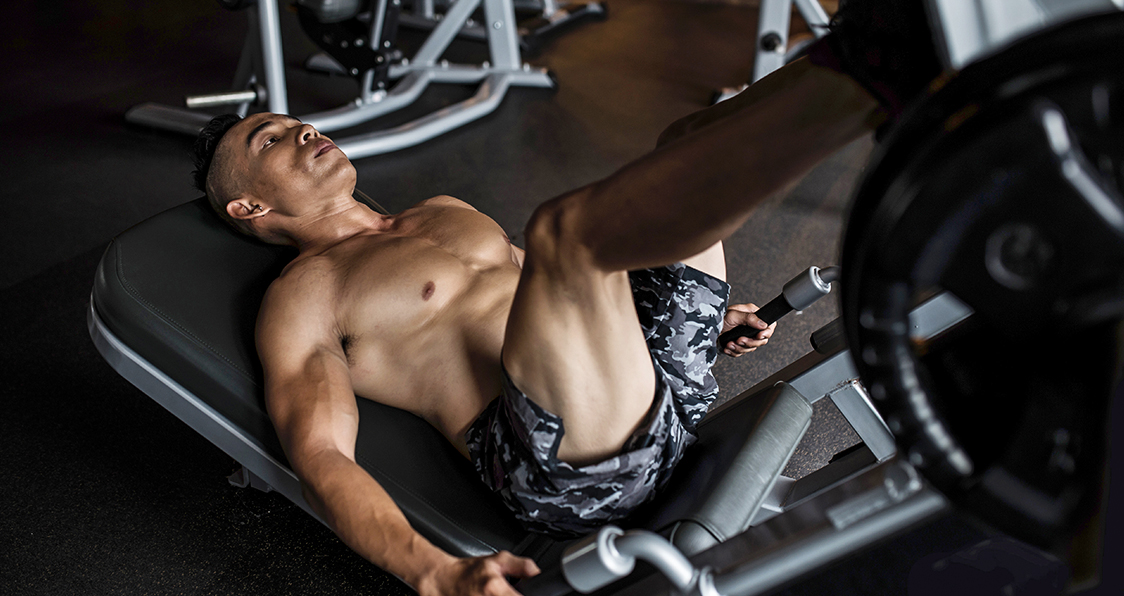
6 Most Common Leg Press Mistakes Everyone Makes – Including You
Leg Press Mistakes You Need To Stop Making
For many people, their self-respect is directly proportional to the amount of weight they can lift. Gym bros try to outdo each other by competing against one another in the gym, and the leg press is usually at the center of the abuse.
Although the leg press is a fairly easy exercise, many people still manage to screw it up. Our goal with this article is not to shame anyone. We’re listing out the mistakes so that other people can learn from them and avoid injury.
Going Too Heavy
We propose a strict ego-test before anyone can get onto the leg press machine. We don’t mean it figuratively, we literally want someone to question the lifter about his PR on the squat and deadlift before he can put on more than four plates on the machine.
The ego-lifters move the sled a couple of inches every rep before calling it a set. If you’re not able to maintain a complete range of motion (thighs touching the torso), you’d be better of lowering the weights.
Using Arms
Most people spot themselves by pushing their legs with their hands. The self-spot is acceptable if you’re training for failure and need a little assistance towards the end of the set. But if you need to push through your arms from the first rep, you have some soul searching to do.
On the other hand, some people leave a lot of gains on the table by raising their arms in the air or crossing them over their chest. Holding onto the sidebars or the pads can help you in generating thoracic pressure and keeping your core tight.
Lower Back
Some people make the mistake of lifting off their lower back from the pad. After your legs, your lower back is the muscle that is put under the most stress while performing the leg press.
If you feel pain or stress in your lower back while performing the exercise, you need to fix your posture. You can try adjusting the angle of the pad if you don’t see relief after making sure your lower back is not elevated.
Feet Placement
It’s not uncommon to see people performing the exercise with a messed up feet placement. In a normal stance, your feet should be placed at a shoulder-width on the platform. Your toes should be pointing out slightly (11 and 1 o’clock).
If you’re targeting the inner sweep of the quads, your feet will be wider than shoulder-width and the toes will be pointing farther outwards. And while training the outer sweep, your toes will be placed parallel and next to each other.
Knee Movement
Performing the leg press correctly requires you to learn the proper technique. While lowering the sled, your knees shouldn’t fold-in. You need to push-out your knees as you bring them closer to your chest.
In an orthodox position, your legs should be at the sides of your torso at the bottom of the movement. You also need to make sure your heels don’t come off the platform as you lower it down.
Back Placed Flat Against The Pad
This can get a little confusing as we just told you that your lower back shouldn’t be elevated. Remember – while, your upper and lower back should be placed against the pad, your mid-back should be slightly elevated.
You should maintain a big-enough arch so that your hand could pass between the pad and your back. Placing your mid-back on the pad will put unnecessary tension on your back and you won’t be able to maintain a full range of motion.
Which is your favorite exercise?
Let us know in the comments below. Also, be sure to follow Generation Iron on Facebook and Twitter.
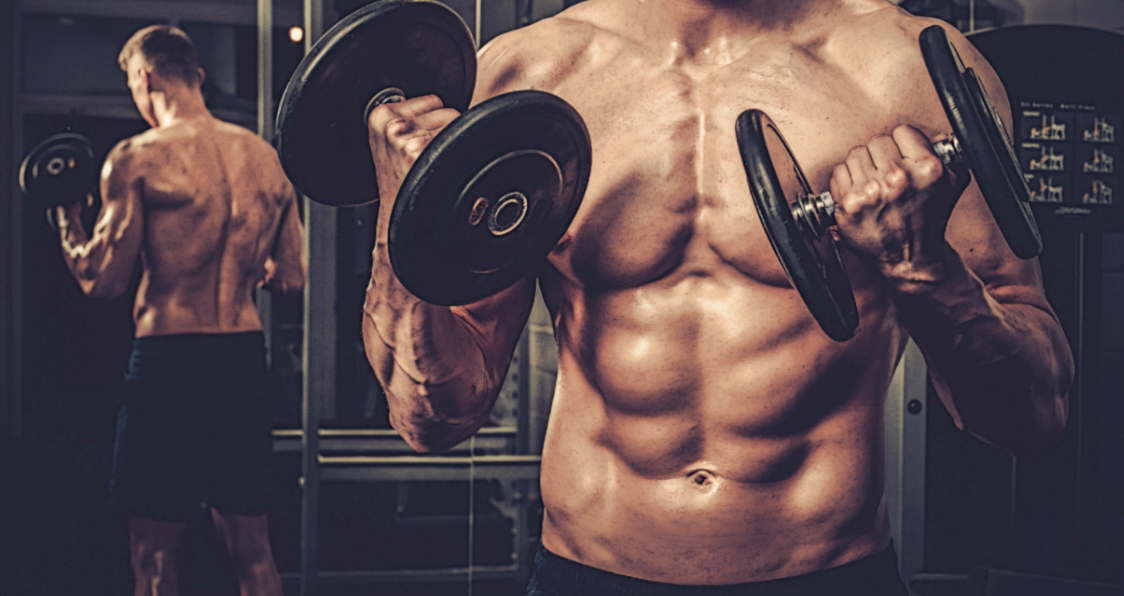
The Pros and Cons of the Push, Pull, Legs Training Split
The pros and cons of push, pull, legs.
Everyone is looking for the perfect training split that will completely revolutionize their gains and bring about the best results. For each individual the results will vary, but realistically there’s no wrong way to split your training. Most training splits are designed based on the individuals ability to train on a consistent basis.
Some people love total body training, especially if they’re strapped for time. Some individuals enjoy breaking up their training on two specific body parts per training session. Really, it’s all subjective and a matter of preference.
That said, each training split has its own benefits and drawbacks. For instance, a popular training split like push, pull, legs is one that many athletes conform to. While there may be some great benefits to this training method, there are also some drawbacks to look out for in order to get the most out your training.
Pro
One great thing about the push, pull, legs program is the emphasis on training specific muscle groups. Push days consist of training all the pushing muscles including the chest, triceps, and shoulders. Pull focuses on biceps, back and is usually paired with ab work as well. Leg day consists of training the collective lower half.
This kind of split allows for some very specific focus and in turn some great recovery time for every targeted muscle group. Because you’ll be working antagonist muscles every other day, it allows the muscles from the previous day to get some adequate rest and recovery, a major key to building quality muscle.
Con
Sounds great right? What could be the down side to training in this manner? Well, while the split still allows you to train the entire body, depending on the intensity of your training session and your lacking body parts, the split may not attack your weak points nearly as much as they should in order to allow them to improve.
For example. If you have lacking in the leg department, most of the split is focused on the upper body. The two days spent training the upper body is necessary to overall growth, but with one day to focus on your lagging legs, it can throw everything off. The split would require modification in order to give your weak points the attention that they need.
This can be compounded if your weaknesses are in multiple areas including the legs, biceps, back and triceps for example. That means additional time would be needed to be put on each aspect of the split. If the split isn’t handled properly you could easily burn yourself out, leaving little time for recovery.
Every training split is going to have its pros and cons. That’s not to say you shouldn’t be using the push, pull, legs program. It’s obvious that the training split has offered great success to many athletes, so it’s definitely something to be experiment with.
For more news and updates, follow Generation Iron on Facebook, Twitter, and Instagram.
Managing Editor at Generation Iron, Jonathan Salmon is a writer, martial arts instructor, and geek culture enthusiast. Check out his Instagram, Twitter and Facebook to keep up with his antics.
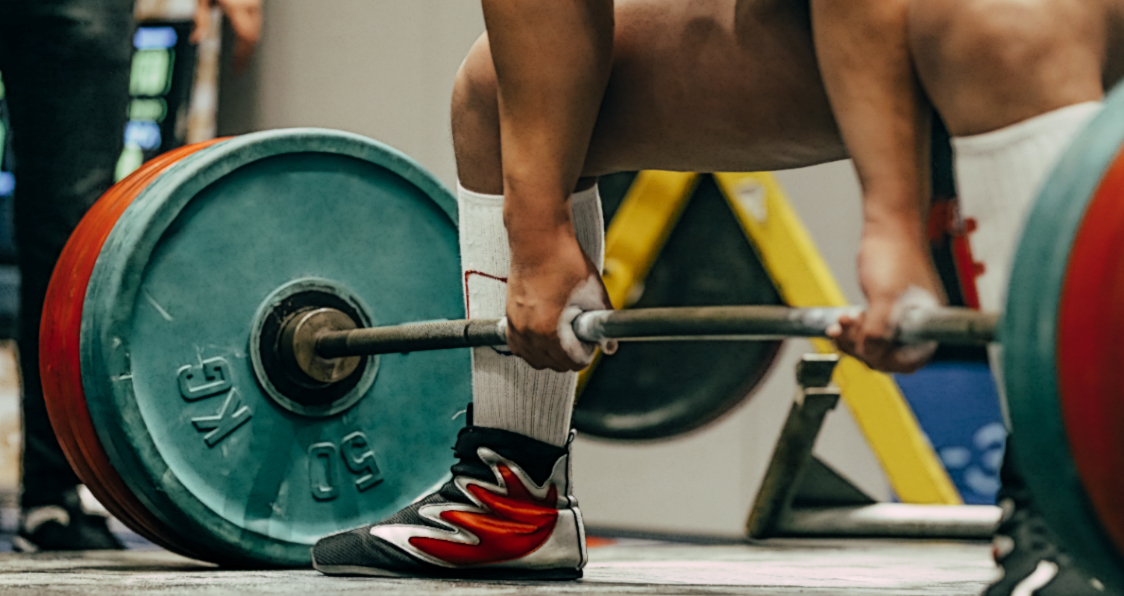
The Ultimate Workout To Build Ripped Hamstrings
Build Jacked Hamstrings With This Workout
Want to know what ripped hamstrings look like? Imagine a few steel chains running under the paper thin skin at the back of your legs. These chains are what are used to lower and raise your torso when you bend forward to touch your toes or in exercises like the deadlifts.
Hamstrings can be a stubborn muscle group to develop. It’s hard to establish a mind-muscle connection with the hamstrings as they’re at the back of your legs and you can’t look at them in the mirror while training.
Lying Leg Curls – 4 Sets 15 Reps
You’ll be performing a combination of isolation and compound exercises in this workout to smoke your hams. The compound lifts help in building strength and size of the muscle and the isolation movements improve the conditioning.
You’ll start off with the lying leg curls (an isolation exercise) to activate and engage your hams. The concentric (upward) movement should be explosive, and the eccentric should be slow and controlled.
Sumo Squats – 3 Sets 12-10-8 Reps
The sumo squats target the hamstring and abductors primarily. Stand with your feet placed more than shoulder-width apart and point your toes outwards. You should go as deep as possible without leaning forward to target your hamstrings optimally.
If you have trouble performing the barbell sumo squats, you can use a dumbbell. Stand on an elevated platform (like aerobic steps) and take the same stance as you would during the barbell squats.
Hold a dumbbell with both your hands while your arms are fully extended towards and perpendicular to the floor. Your arms will remain in the same position throughout the exercise.
Dumbbell Deadlifts – 3 Sets 12-10-8 Reps
Remember the steel chain reference at the beginning of the article? You need to bring it in practice in the dumbbell deadlifts. Place your toes on quarter plates to better isolate and recruit your hamstrings.
Maintain a slight bend in your knees and lower your torso by bending at your hips while pushing them back and focusing on your hamstrings. Keep your back arched and go as low as you can without recruiting your lower back.
Supersets
Standing Hamstrings Curls – 3 Sets 20-15-12 Reps
Standing hamstrings curls are an isometric exercise which helps in building conditioning and fixing any muscle imbalances. If you don’t have access to a standing hamstring curl machine, you can use a leg extension machine.
GHD Hyperextensions – 3 Sets 10 Reps
Superset the standing hamstrings curls with the GHD hyperextensions. The GHD hyperextensions were brought into the mainstream by CrossFit athletes and are an incredibly effective exercise to annihilate your hamstrings.
Barbell Hip Thrusts – 3 Sets 12-10-8 Reps
Barbell hip thrusts are one of the most underutilized exercises when it comes to hamstring training. Although the hip thrusts can help you in building meaty hams, you should avoid them if you have an impending lower back injury.
Place your upper back on a flat bench while you have a barbell placed across your groin. Use padding around the barbell to avoid it from digging in when you thrust. Hold and contract your hams at the top of the movement for a couple of seconds before returning to the starting position.
Header image courtesy of Envato Elements
Do you train your hamstrings and quads on the same day? Let us know in the comments below. Also, be sure to follow Generation Iron on Facebook and Twitter.
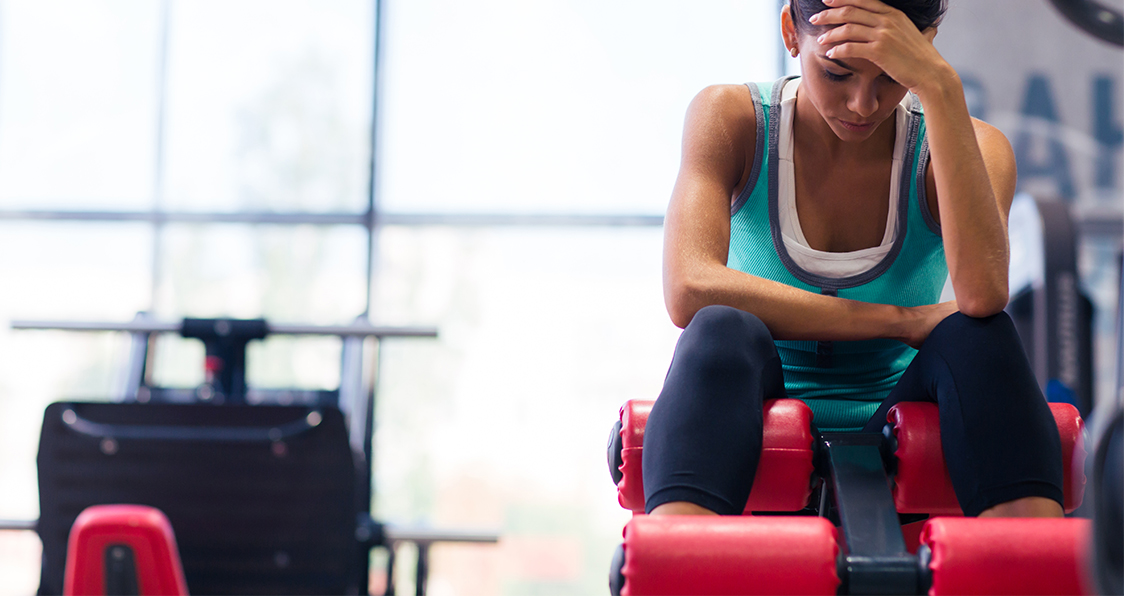
Avoid These Training Mistakes To Get The Most Out of Your Workouts
The Mistakes To Avoid In Your Workouts
As much as you would like to have perfect workouts, small mistakes can deprive you of that happiness, especially if you’re a beginner. Most people make the mistakes listed in the article and by doing so leave gains on the table.
Read the article and carefully critique yourself if you’re making the mentioned errors. You might be making the mistakes without realizing it. You’ll notice a substantial improvement in your physique over time by fixing these errors.
Quantity Over Quality
Some people make the mistake of lifting too heavy when they should be focusing on their form. Your muscles don’t know how much weight is on the bar, your ego does. Leave your ego on the door when you enter the gym. Ego lifting does nothing more than increase the chances of injury in the gym.
Focus on your form and contracting your muscles with every repetition. You should also have a strong mind-muscle connection during your workouts. Achieving a pump can be a good indicator if your mind-muscle connection and muscle contractions are on point.
Letting The Intensity Drop
Many people let all their hard work go in vain by letting the intensity drop after they are done with a set. If your goal is to lose weight or build muscle mass, you should keep the intensity of your workouts as high as possible.
Give yourself a deadline and complete the workout within the specified time. Don’t waste the time between sets by using your phone or talking to people. Use the rest time to pose and stretch out the muscle.
Unstructured Training
Some people follow a vanilla training program which isn’t designed for their body. Your workout program should cater to your strengths and weaknesses. You should focus on building up your weaknesses while polishing your strengths to build a symmetrical physique.
Thoroughly analyze your body and look for lagging muscle groups. Design your training so it follows a structured approach to all your muscle groups. You’ll see your weaknesses disappear and aesthetics improve as you follow a customized training plan.
No Warm-Ups Or Cool-Downs
Many people start working out as soon as they hit the gym and walk out right after their last exercise. You are leaving gains on the table by not giving your body the proper warm-up and cool-down.
Prime your muscles for your workout session by stretching them out and doing a couple of lightweight warm-ups. Your muscles are filled with lactic acid and many other toxins after a workout and you can flush them out with a cardio session or foam rolling.
No Tracking
It’s incredibly important to set goals before you start training. Starting training without a goal is like leaving your home without a pre-determined destination. Once you have a goal, write it down on paper and track your progress weekly to ensure you’re heading in the right direction.
Track your body measurements, workouts, and how much weight you use on certain exercises. If you’re improving in all the aspects, keep going or otherwise make the necessary adjustments.
Header image courtesy of Envato Elements
Are you making any of these mistakes? Let us know in the comments below. Also, be sure to follow Generation Iron on Facebook and Twitter.
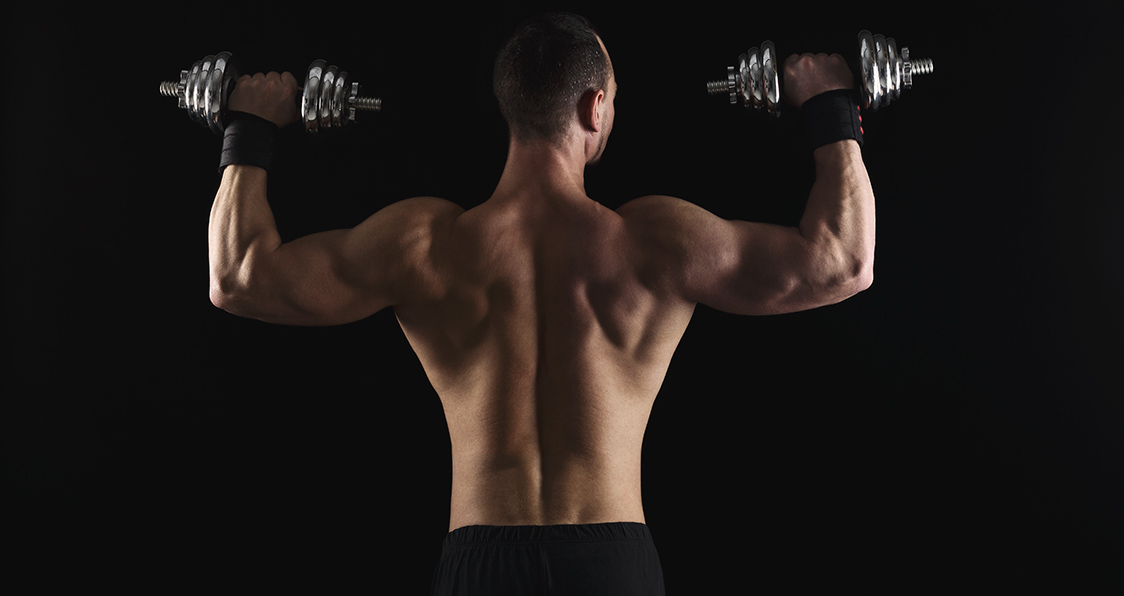
6 Best Exercises For Building Boulder Shoulders
Build Broad Shoulders With These 6 Exercises
“Broad shoulders don’t look nice,” said no one ever. Shoulders can be one of the hardest muscle groups to develop. Only a few people follow the right training routine to achieve big shoulders.
You need to follow a holistic approach in your training to achieve shoulders which look like massive boulders. Building round and big shoulder take much more than performing a few shoulder presses.
Arnold Presses
Arnold presses are one of the best shoulder exercises for overall shoulder development. Named after the Governator himself, the exercises can help in building round shoulder caps which look like the top of football helmets.
Sit on a chair while holding a dumbbell in each hand with a supinated (palm facing inwards) grip. At the beginning of the movement, hold the dumbbells at your shoulder level while keeping your elbows bent.
Rotate your arms as you lift the dumbbell over your head. Your palms should be facing forward at the top of the movement. Rotate your palms to the starting position as you lower the dumbbells.
Dumbbell Front Raises
The dumbbell front raises primarily work the anterior deltoids. The exercise helps in developing the separation between the chest and shoulders. Don’t make the mistake of using momentum by swinging back and forth to lift the dumbbell while performing the front raises.
Hold a dumbbell in each hand at your sides extended at arms length. Your palms should be facing your thighs at the starting position. Elevate your right arm while maintaining a slight bend in your elbow until it’s parallel to the floor. Return to the starting position and repeat with your left arm. Alternate between arms for the recommended reps.
Leaning Cable Side Lateral Raises
Using cables in your workout helps isolate your muscles which can build definition and conditioning. Side lateral raises work the medial delts. Stand beside the cable pulley machine so that your right arm is next to the pulley machine.
Hold the D-bar attached to the low pulley with your left arm. Lean toward your left side and elevate your left arm until it is parallel to the floor. Return to the starting position and repeat for the recommended reps. Repeat on your right side.
Seated Smith Machine Presses
Using a smith machine gets you the best of the isolation and compound movement worlds. Smith machine presses work the medial deltoids while keeping constant tension on your shoulders.
Place a chair under the smith machine bar so that anterior delts are directly under the barbell throughout the movement. Maintain a full range of motion to get the best results while performing all the exercise mentioned in the article.
Chest Supported Dumbbell Rear Delt Raises
Rear deltoids are one of the weakest muscle groups for most people. Since your rear delts are a stubborn muscle group, performing the exercise on an incline bench adds an isolation aspect to better target the muscles.
Adjust the incline bench so that it is forming a 60-degree angle with the floor. Grab a dumbbell in each hand with a supinated (palms facing inwards) grip extended at arms length. Elevate the dumbbells to your sides while maintaining a slight bend in your elbows until they are parallel to the floor. Repeat for the recommended reps.
Barbell Shrugs
Barbell shrugs work your trapezius muscles. Traps are a major muscle group which covers most of the upper back and the posterior of the neck. Shrugs are one of the easiest exercises to perform and yet many people do them wrong.
Hold the barbell with a shoulder-wide pronated (palms facing inward) grip. While maintaining a slight bend in your elbows, lift your shoulder as high as you can without using jerking. Hold at the top of the movement for a couple of seconds before returning to the starting position.
Which is your favorite shoulder exercise? Let us know in the comments below. Also, be sure to follow Generation Iron on Facebook and Twitter.
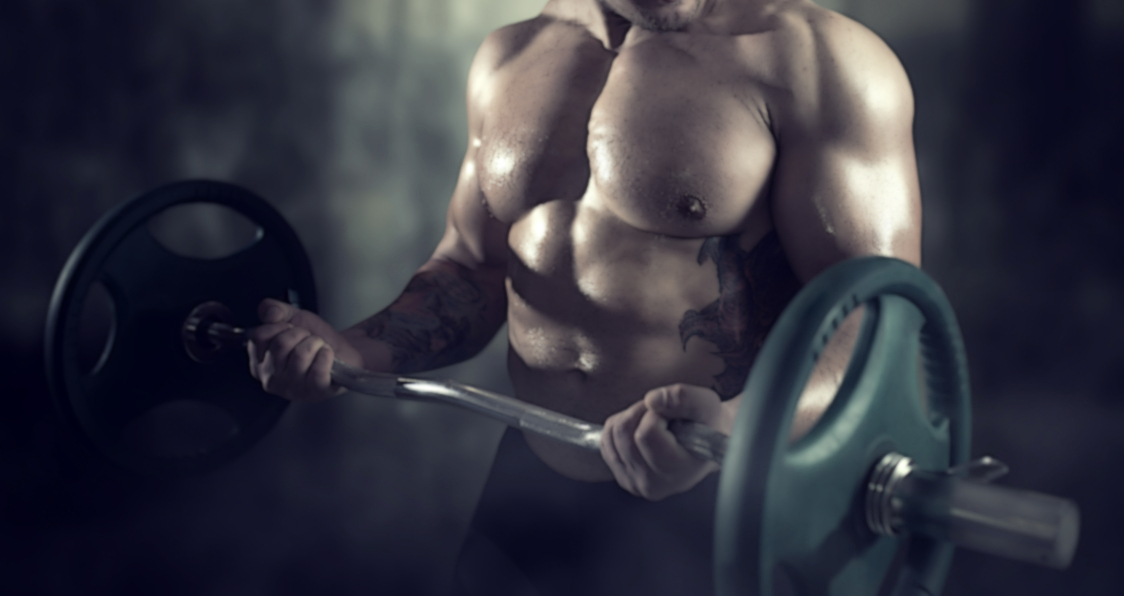
Gold Standard Hypertrophy-Specific Training
Driving Muscular Hypertrophy
Before we consider the many facets of Hypertrophy-Specific Training (HST), let’s first consider muscular hypertrophy itself. Hypertrophy is a word that is often thrown around in the health and fitness sector and, while many recognize that it refers to muscular growth, few understand the true demands and requirements necessary to bring about changes in muscle mass.
HST is a training method based on a number of well-researched scientific principles that were first discovered in the laboratory. Over the years, these methods have been refined and adjusted to coincide with the latest research and are seen as essential for all hypertrophy training. An effective HST program will incorporate the following principles in order to elicit maximal muscle growth.
The 4 Muscular Hypertrophy Principles
There are 4 primary principles that are considered foundational for all hypertrophy training. Over time, providing that these principles are applied appropriately, individual muscle fibers will be forced to adapt and grow in cylindrical size leading to an overall increase in total mass.
1. Mechanical Load
The first principle to consider is quite an evident one; it is the application of mechanical load. Mechanical load is the driving force for hypertrophy and appears to be the most important principle for stimulating muscle fibers to grow. Research indicates that muscles are stimulated to grow after being exposed to a certain degree of mechanical loading. This load can be applied through the use of barbells, dumbbells, kettlebells, resistance machines, and even your own bodyweight.
This mechanism involves a number of cellular processes and responses involving satellite cells, growth factors, calcium, and an array of other well-researched factors connected with muscle tissue strain (1). It’s important to recognize that it is not the effort required to lift the weight that causes adaptation to occur. Rather, it is the physical effects of placing a load on the muscle as it moves through concentric and eccentric phases that dictate change. Additionally, it’s important to recognize that building muscular fatigue does not dictate the rate of muscular growth. This, therefore, means that you do not necessarily have to work through to absolute muscle failure in order to stimulate significant growth.
2. Chronic Stimuli for Growth
As stated, muscles will only be stimulated to change after being subject to a certain degree of load. If we fail to regularly expose the muscles to a training stimulus, we fail to see substantial changes in muscle mass. It is essential to create the right environment for maximizing muscle growth; this is something that can be done through manipulating training frequency…
While we must train frequently to elicit growth, the general consensus is to allow for at least 48 hours before training the same muscle group again – this principle is applied with HST. It has been suggested that training any sooner than 48 hours may even hinder and impair protein synthesis and consequent muscular growth (2). The purpose of repeatedly loading the same muscle group every 48 hours is to maintain a high anabolic state and encourage maximal muscular growth.
While some may argue that 48 hours is not a long enough recovery period, research suggests that although the muscles may not have fully recovered structurally, exercising 48 hours later will not negatively impact the muscles recovery ability.
3. Progressive Load
As your muscles are exposed to a training stimulus, significant strength, neural and metabolic adaptations will take place. Initially, the stimulus applied to the muscles is new and in order to deal with the demands of the training, the muscles must adapt. However, if you continue training at the same intensity, you will quickly reach a point where your muscles will no longer adapt or increase in size. This is because they have adapted to the point that they can cope with the training stimulus.
This is why it is essential to apply the progressive load principle to our training. Progressive loading involves gradually increasing the demands of training – typically through manipulating a training principle such as intensity, volume or load. In simpler terms, we can progressively load our training by gradually adding more weight on the bar or by adding additional reps and sets into our workouts (3).
With HST, you will progressively load on a week by week, session by session basis. The goal is always to add more weight with each completed session. If applied correctly, you will continue to provide an effective training stimulus to the muscles thus facilitating muscular growth.
4. Strategic Deconditioning
This principle is the one hypertrophy principle that is most commonly overlooked however, it is vital for efficient progress. The reason that the deconditioning principle is often avoided is that it involves halting all training for a short period of time. On the face of it, a week off may be welcome however, many individuals fail to schedule in deconditioning periods believing them to be unnecessary.
Strategic deconditioning is simply the opposite of progressive overload. Its purpose is to reduce training intensity which allows the body time to recover from previous exertions thus priming the muscles for future growth. As stated, the principle involves a short period of time of no training (typically lasting one to two weeks). A deconditioning period should be applied as soon as improvements are seen to stall. The purpose of this is to allow the muscle to detrain to a certain extent and allow it to become sensitive to the training stimulus once again (4).
Finally, It’s important not to confuse strategic deconditioning and deloading. While the purpose behind both methods is similar, they are applied slightly differently. As mentioned, strategic deconditioning involves a total cessation in all resistance-based activity whereas deloading allows resistance training to continue but at a reduced intensity.
HST Guidelines
Although HST follows these universally recognized principles, HST programs do tend to look slightly different from others. The reason for this is that there are a number of specific guidelines that must be followed with all HST programs – guidelines that are based on scientific studies and backed up with years of research.
HST vs Conventional Training
The first apparent difference between HST and other hypertrophy programs is in regards to training volume. In order to stay true to hypertrophy principles, sets of heavy lifts are spread out through the week, rather than just one bout per week. For example, if there are 6 prescribed sets of squats, instead of completing the entire six in one sitting, the sets are spread out across the course of the week. So, instead of completing the full 6 sets of squats on Monday, as with many conventional programs, you perform 2 sets of squats on Monday, Wednesday and Friday.
This method allows you to apply the training stimulus to the muscle group multiple times per week. In doing so, you promote hypertrophy all while reducing the demand on the nervous system thus reducing the risk of overtraining. Additionally, there are a number of studies which suggest that performing multiple sets may not have a significant impact on hypertrophy and therefore, 1-2 sets will suffice. (5).
While the volume for individual exercises may be low, the total weekly volume for HST is average and actually comparable to universally used “split” hypertrophy programs.
Exercise Choice
For HST, and hypertrophy training generally, it is important to select heavy, compound exercises to provide the most potent training stimulus possible to a number of muscle groups. Compound exercises are movements which demand effort from a muscles groups across a number of joints. A few excellent examples of effective muscle-building compound exercises include squats, bench press, bent rows, and shoulder presses.
Isolation exercises, where the focus is on developing a single muscle group, can play a supplementary role in hypertrophy training, however, as stated, the main focus should predominantly be on compound movements.
Adjusting Reps
HST involves decreasing the number of reps performed every two weeks – starting with 15 reps for the first two weeks and gradually working down to sets of 10 and 5. This is done to accommodate a gradually increasing load as the weeks progress.
It is possible to adjust the rep range on a weekly basis (15, 12, 10, 8, 5), however, whether you adjust reps on a weekly or fortnightly basis has no impact on the rate of adaptation.
Building Fatigue and Lactic Acid
As with many hypertrophy orientated strength programs, HST incorporates high-rep sets. The intention with high-rep sets is to build lactic acid levels to increase the readiness of the muscles and connective tissues for dealing with heavy loads. This will not only work to reduce the risk of sustaining an injury but may promote healing and general health of tendons.
Eccentric Training
One final difference between HST and standard hypertrophy program is the inclusion of a two-week block of eccentric training. As you may already be aware, in order to produce movement, muscles must contract concentrically and eccentrically. Concentric contractions involve the shortening of muscles whereas eccentric contractions lengthen the muscle.
Eccentric training focuses on the lengthening of muscles under a load. For example, let’s analyze the bicep curl. In order to drive the bar upward toward the shoulder, the biceps must concentrically contract followed by an eccentric contraction in order to lower the bar back down to the hips. To complete eccentric bicep curls, this lowering phase must be accentuated with the contraction taking 3 – 5 seconds to complete.Eccentric training has been thoroughly researched over the years and what is clear is that eccentrics are stronger than concentric contractions and can, therefore, tolerate a greater deal of strain (6). Based on this, HST recommends that you perform eccentrics using more than your 5 rep max to increase the mechanical load on the muscle and contribute toward greater muscular hypertrophy.
HST Summary
– Train each muscle group every 48 hours– Look to increase the weight lifted with every workout– Decrease the number of reps every 2 weeks (15, 10, 5)– Add a 2-week block of eccentrics at the end of the training cycle, if necessary– Allow for Strategic Deconditioning, when appropriate
Sample HST Program
The following tables include a sample from a general HST program. You will find week 1 and week 2 workouts displayed below.
Week 1
Day 1 (Monday)
Day 2 (Wednesday)
Day 3 (Friday)
Back Squat2 x 15
Leg Press2 x 15
Back Squat2 x 15
Leg Curl2 x 15
Leg Curl2 x 15
Leg Curl2 x 15
Bench Press2 x 15
Dips2 x 15
Bench Press2 x 15
Chin-Ups2 x 15
Bent Rows2 x 15
Chin-Ups2 x 15
Shoulder Press2 x 15
Shoulder Press2 x 15
Shoulder Press2 x 15
Shrugs2 x 15
Shrugs2 x 15
Shrugs2 x 15
Bicep Curls2 x 15
Bicep Curls2 x 15
Bicep Curls2 x 15
Tricep Press2 x 15
Tricep Press2 x 15
Tricep Press2 x 15
Calf Raises2 x 15
Calf Raises2 x 15
Calf Raises2 x 15
Week 2
Day 1 (Monday)
Day 2 (Wednesday)
Day 3 (Friday)
Leg Press2 x 15
Back Squat2 x 15
Leg Press2 x 15
Leg Curl2 x 15
Leg Curl2 x 15
Leg Curl2 x 15
Dips2 x 15
Bench Press2 x 15
Dips2 x 15
Bent Rows2 x 15
Chin-Ups2 x 15
Bent Rows2 x 15
Shoulder Press2 x 15
Shoulder Press2 x 15
Shoulder Press2 x 15
Shrugs2 x 15
Shrugs2 x 15
Shrugs2 x 15
Bicep Curls2 x 15
Bicep Curls2 x 15
Bicep Curls2 x 15
Tricep Press2 x 15
Tricep Press2 x 15
Tricep Press2 x 15
Calf Raises2 x 15
Calf Raises2 x 15
Calf Raises2 x 15
Final Word
Many hold HST in extremely high regard as it has been found to be very effectual for building significant muscular size. It appears to be an extremely powerful muscle building method and as a result, HST has been adopted by a number of competitive bodybuilders. While HST is a method worth adopting for bodybuilders, over the years it has also proved to be very useful for athletes and participants across a number of sports – specifically, powerlifters and Olympic lifters.
For more news and updates, follow Generation Iron on Facebook, Twitter, and Instagram.
References:
1- The Journal of Strength and Conditioning Research 24(10):2857-72 · October 2010
2- Tipton, K. D.; Wolfe, R. R. (2001-3). “Exercise, protein metabolism, and muscle growth”. International Journal of Sport Nutrition and Exercise Metabolism. 11 (1): 109–132. ISSN 1526-484X. PMID 11255140.
3- Services, Department of Health & Human. “Resistance training – health benefits”. www.betterhealth.vic.gov.au.
4- Häkkinen, K.; Komi, P. V. (1983). “Electromyographic changes during strength training and detraining”. Medicine and Science in Sports and Exercise. 15 (6): 455–460. ISSN 0195-9131. PMID 6656553.
5- Carpinelli, R. N.; Otto, R. M. (1998-8). “Strength training. Single versus multiple sets”. Sports Medicine (Auckland, N.Z.). 26 (2): 73–84. doi:10.2165/00007256-199826020-00002. ISSN 0112-1642. PMID 9777681
6- Hoppeler, Hans (November 16, 2016). “Moderate Load Eccentric Exercise; A Distinct Novel Training Modality”. Frontiers in Physiology. 7. doi:10.3389/fphys.2016.00483. ISSN 1664-042X. PMC PMCPMC5110564
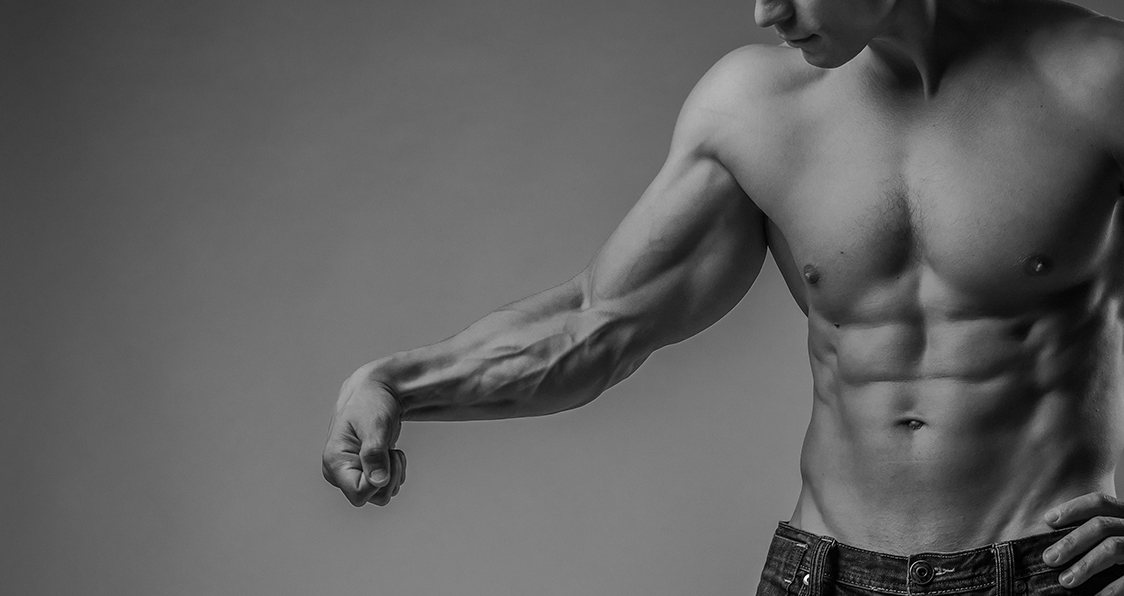
5 Exercises Required to Boost Bicep Growth
Best Exercises For Building Your Biceps
“I don’t like training my biceps,” said no one ever. For many gym bros, their self-esteem can be directly proportional to the size of their guns. Countless people around the world spend hours working on their arms but only a few of them have some well-chiseled guns.
If you’re determined to grow your pythons, choosing the right exercises is half the battle won. The exercises on the list are a mix of isolation and compound lifts so you can get the best of both worlds.
Barbell Curls
Barbell curls are a great compound (multi-joint) exercise which can help in developing muscle mass and strength. To make the most of this lift, use an Olympic barbell. Doing so will recruit your core stabilizers.
Using the Olympic barbell can result in adding inches to your biceps. Make sure you don’t use momentum by jerking or swinging back and forth to lift the bar. Keep your torso upright and your elbows pinned to your sides.
Hammers Curls
Hammer curls are an incredibly effective exercise in improving the length of your biceps. Performing the dumbbell hammer curls also recruits your forearms as you hold the dumbbells with a neutral (palms facing each other) grip.
You can target your biceps from different angles while performing the dumbbell hammer curls. Curling the dumbbells straight forward will target the medial biceps. You can work the outer bicep heads by curling the dumbbells in a crossbody motion and curling with your arm pointing outwards will hit your inner bicep heads.
Machine Preacher Curls
The machine preacher curls are a great isolation exercise as it’s a combination of the preacher bench and cables. If you want to work on your bicep peak, you can’t go wrong with the machine preacher curls.
Most people make the mistake of lifting heavier weights than they can handle in this exercise. Letting their egos get in the way gets the better of them and they leave gains on the table by not following a full range of motion.
21’s
21’s are one of the most underutilized bicep exercises. You haven’t experienced the nastiest bicep pump of your life until you’ve done the 21’s. 21’s can help add size and definition to your guns.
Stand with an upright torso with a barbell in hands extended at arm’s length. Hold the barbell with a shoulder-width grip. Start the lift by performing seven reps from the bottom to the middle of the movement (like half barbell curls). Without resting, lift the barbell so it is next to your shoulder (top of the barbell curl movement).
Perform the next seven reps from the top to the middle. After completing the second mini-set of seven reps, perform the last seven repetitions with a full range of motion. The three mini-sets of 7 reps form a single set, and you need to complete it without stopping for rest.
Overhead Cable Curls
If you’re like most people, you like to show off your pythons with the front double bicep pose. Performing the overhead cable curls will polish your guns by working on the peaks and developing definition and separation.
Stand in the center of a cable pulley machine while holding a D-handle attachment in each hand with a supinated (palms facing the roof) grip. At the starting position, your arms should be fully extended at your sides so your upper arms are parallel to the floor.
While keeping your upper arms stationary, curl the weights by flexing at your elbows. Hold and squeeze your biceps at the top of the movement. Return to the starting position and repeat for the recommended reps.
Which is your favorite bicep exercise? Let us know in the comments below. Also, be sure to follow Generation Iron on Facebook and Twitter.
*Header image courtesy of Envato Elements

Get Rid of Your Double Chin – Fast!
“I love my double chin,” said no one ever.
Let us begin by saying that spot reduction is not a thing. Meaning? Your double chin is not going away if you do a few neck stretches every day. Going crazy with these spot reduction exercises will leave you with cervical pain at best.
Some people take the spot reduction fiasco a step further by going for skin treatments and other face fat-reducing therapies. These people are anguished when they see fat pilling under their faces just after a few months of their procedures.
We don’t want to sound pessimistic, but if you think you’ll cheat your way to a superhero jawline – that’s not going to happen. Losing face fat is absolutely possible, but it’s going to take weeks’ worth of hard work. Don’t let anybody tell you otherwise.
Why You Have Face Fat
Genetics
Just like with other things fitness, genetics play a major role in your body composition. All of us are built differently. While some people have a chiseled jawline, the others have an oval-shaped face that can accentuate the roundness (and bulkiness) of their faces.
Some people are more genetically dispositioned to gain fat on their face. On the other hand, you probably know a few people who are overweight but could cut a pizza with their razor-sharp jawlines.
Apart from the structure of the face, facial features can have an impact on our appearance. We can reduce the amount of fat stored on our faces but no amount of dieting or exercise is going to change the underlying structure.
Body Fat Percentage
It goes without saying – if you’re generously overweight, no amount of sharp facial features can hide your face fat. Most of the fat in our bodies is stored under our skins and is distributed to all our body parts in varying degrees.
The thing about face fat is, it’s pretty hard to hide. Unlike with your love handles, you don’t have the option to cover them with layers of clothing. The new face mask lifestyle does help though.
Reducing your body fat percentage is the only way that double chin is going away. As you start to lose weight, you’ll see the fat shedding off your cheeks, jawline, neck, and overall body. But how do you lose body fat, you ask? This brings us to our next section.
How To Lose Face Fat
Follow a Calorie Deficit Diet
The quickest and the most effective way to shed body fat is to follow a calorie deficit diet. In a deficit diet, you’re burning more calories than you’re consuming. In a deficit diet since your body is short on energy, it burns stored fat to power itself. Quiet a robust system if you ask us.
Most people make the mistake of going too hard with the deficit. For losing 2-5 pounds every week, you should not be cutting out more than 100-150 calories from your diet. You should always ease into a deficit diet.
As you get comfortable with your new diet and your body starts responding, you should then take a call on cutting out more calories. Every person will respond differently to a reduction in calories and you should approach it with a trial and error mindset.
Cutting too few calories will result in an ineffective diet plan, and cutting too much will lead to a loss of muscle mass (if you have any). If you cut too much too soon, you’ll feel lethargic throughout the day and you’ll be more prone to binge eating and falling for cheat meals because of your cravings.
Weight Training
Resistance training is an underutilized tool when it comes to burning body fat. Heavy compound weightlifting can ramp up your fat loss process. Your metabolic rate jumps sharply between sets and post-workout while your body recovers.
The rise in the metabolic rate helps burn fat even when you’re not active. You should train at least 4-5 times every week to keep your metabolism in peak conditioning. Your workouts should be high intensity and high volume consisting mainly of compound lifts.
Studies have shown that targeting multiple muscle groups at once with compound exercises like squats, deadlifts, and military presses can lead to an increase in metabolic rate, muscle mass, and strength.
HIIT Cardio
Cardio is probably the most expected thing on the list. While cardio is a great fat-burning tool, you shouldn’t spend all your time climbing a Stairmaster to nowhere. Most people walk on a treadmill like they are after a dangling carrot in front of their noses. What does it remind you of? It speaks volumes about non-smart work.
To get rid of the double chin at the earliest, you should do a HIIT cardio session after your resistance training workouts. A HIIT cardio session should not last more than 10 minutes. In the 10-minute session, alternate between one minute of all-out sprinting and one minute of brisk walking.
Make Protein Your Go-To
Protein is your best friend if your goal is to lose the double chin. Not only does protein help in gaining muscle mass and losing fat, but it also helps recover faster after workouts and in retaining muscle mass.
Protein is also great at making you feel full for longer periods of time. If you plan on going out with friends but don’t want to feast on junk food, your best bet would be to gulp down a protein shake before heading out.
You should also eat a protein-rich meal first thing after waking up as according to a study published in the International Journal of Obesity, eating a high-protein diet in the morning—at least double what you’re eating now—can help you consume 400 fewer calories throughout the day and burn more fat over time.
Use Fat-Loss Supplements
Although we don’t want you to treat this as your primary option, fat-loss supplements can be an incredibly effective way of getting rid of the excess boy fat. Disclaimer: most of the fat loss supplements on the market are complete garbage.
Buy a fat loss supplement that has the following ingredients:
3 to 6 mg of caffeine per kilogram of your body weight
0.1 to 0.2 milligrams of yohimbine per kilogram of bodyweight
1 serving of Phoneix
You should use weight loss supplements only if you’re on a deadline and are not seeing the desired results.
Are you trying to get rid of your double chin? Let us know in the comments below. Also, be sure to follow Generation Iron on Facebook and Twitter.
